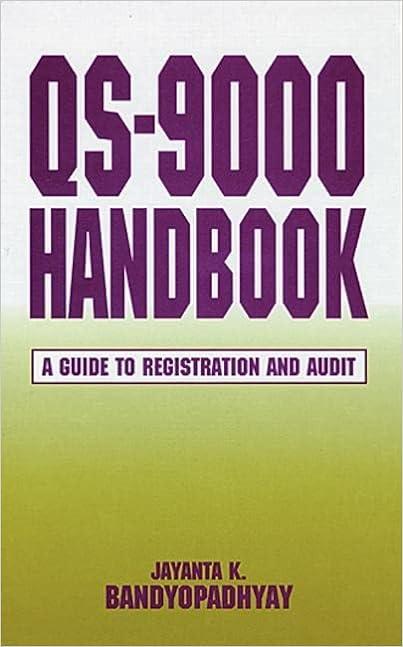1. CD Company manufactures cassettes and CDs. Management is attempting to set the budget for the coming year. Two divisions (Cassette and CD) of the
1. CD Company manufactures cassettes and CDs. Management is attempting to set the budget for the coming year. Two divisions (Cassette and CD) of the company utilize one plant location. The following data have been prepared for review.
| Budgeted Fixed operation costs | $450,000 |
| Available capacity | 1,250 hours |
| Budgeted usage: |
|
| Cassette Department | 1,000 hours |
| CD Department | 175 hours |
Budgeted variable cost per hour in the 1,000-hour to 1,250-hour relevant range: $ 600 per hour
What is the cost per hour of use (i.e. single rate) for the Cassette department and the CD Department assuming budgeted usage is the allocation base and a single-rate method is used?
--------------------------------------------------------------------------------------------
2. Winnie Company had the following activities, traceable costs, and physical flow of driver units:
| Activities | Costs | Physcial flow of Driver units |
| Account inquiry (hours | $400,000 | 10,000 hours |
| Account billing (lines) | 280,000 | 4,000,000 lines |
| Account verification (accounts) | 150,000 | 40,000 accounts |
| Correspondence (letters) | 50,000 | 40,000 letters |
The above activities are used by departments A and B as follows:
|
| A | B |
| Account inquiry (hours | 2,000 hours | 4,000 hours |
| Account billing (lines) | 400,000 lines | 200,000 lines |
| Account verification (accounts) | 10,000 accounts | 8,000 accounts |
| Correspondence (letters) | 1,000 letters | 1,600 letters |
How much of the account inquiry cost will be assigned to Department B?
----------------------------------------------------------------------------------------------
3. ABC Company has two support departments (Power and Maintenance) and two producing departments (Assembly and Finishing). The direct allocation method is currently used to assign support department costs to the producing departments. The causal factor for the power costs is kilowatt hours; the causal factor for the maintenance costs is repair hours. Assume the following information:
|
| Power | Maintenance | Assembly | Finishing |
| Direct costs | $100,000 | $150,000 | $75,000 | $50,000 |
| Kilowatt hours |
| 10,000 | 90,000 | 100,000 |
| Repair hours | 500 |
| 2,500 | 2,000 |
A) What would be the Power Department allocation to the Assembly Department?
B) What would be the Maintenance Department allocation to the Finishing Department?
C) ABC decides to switch to Step-down method and cost allocation sequence is based on a ranking of percentage of services provided to other support departments, which of the following best describes this procedure?
a. Power departments costs are allocated first to Maintenance, Assembly and Finishing, then Maintenances costs are allocated to Assembly and Finishing.
b. Maintenance departments costs are allocated to Assembly and Finishing, then Powers costs are allocated to Assembly and Finishing.
c. Power departments costs are allocated to Assembly and Finishing, then Maintenances costs are allocated to Assembly and Finishing.
d. Maintenance departments costs are allocated to Power, Assembly and Finishing, then Powers costs are allocated to Assembly and Finishing.
SHOW YOUR CALCULATIONS
Step by Step Solution
There are 3 Steps involved in it
Step: 1

See step-by-step solutions with expert insights and AI powered tools for academic success
Step: 2

Step: 3

Ace Your Homework with AI
Get the answers you need in no time with our AI-driven, step-by-step assistance
Get Started


